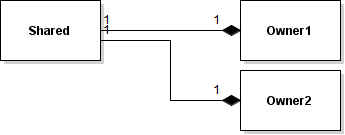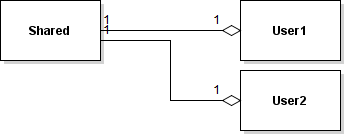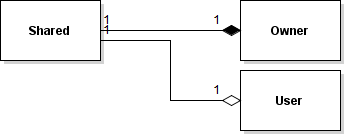Een consument kan zijn geld maar één keer uitgeven. Maar men geeft het wel uit onderheving aan inflatie. Dit wil zeggen dat wanneer we een goed kochten in juni 2006, bv. een auto, dat het uitgegeven geld, volgens de EUCPI2005 index, zo’n 17,95% goedkoper is in 2016. Louter op basis van inflatie. Dit was zo tijdens een decennium met jaren van quasi deflatie (= ongezien). Toch halen we bijna 18% waardevermindering op tien jaar.
Wat gebeurt er economisch wanneer de consument betaalt met privacy? Men zal in de toekomst immers een deel van de auto betalen d.m.v. privacy op te geven: de prijs van die wagen zal dalen precies omdat allerlei organizaties zich gaan bezig houden met locatiedata van de consument (en weet ik veel wat nog allemaal). De consument betaalt dat deel met wat ik privacy-currency zal noemen.
Mijn eigen inzicht is dat een privacy-currency weliswaar meervoudig uitgegeven wordt; oude gegevens worden steeds minder waard. Maar diensten die met privacy-currency werken hebben vaak een langdurige stroom bij haar consument bemachtigd. Daarmee bedoel ik dat het over een sensor gaat (een smartphone met pervasieve app, een thermostaat die jaren aan de muur hangt, een digicorder die dankzij monopolie jaren lang TV-kijkgewoontes vastlegt) die niet éénmalig maar wel steeds weer dezelfde consumentenprivacy “verkoopt” aan het bedrijf.
Zo’n sensor kan slechts enkelmalig geïnstalleerd worden. Want de markt zorgt ervoor dat een privacygegeven zo goedkoop mogelijk geëxtraheerd wordt. Vijf keer vastleggen wat de TV-kijkgewoontes van een consument zijn, heeft in de markt geen nut: de markt zal de efficiëntste verkiezen. Die zal het aan de anderen verkopen.
Dit wil voor mij zeggen dat privacy-currency in inflatie zal gaan. De currency wordt steeds minder waard. De installatie van een sensor heeft nu een zekere prijs (je moet je dwaze product aan de man brengen), maar zal in de toekomst steeds minder opbrengen.
Voorts kost het voor de consument steeds meer om zijn of haar privacy op te geven: men verliest opties bij verzekeringen, men verliest werkgelegenheid, men verliest vriendschappen en zal gepest of aangesproken worden. Typisch zijn oudere mensen dan ook meer gesteld op hun privacy. Ze verkopen hun privacy steeds duurder. Hun ongeletterdheid in technologie ontwijkt dit nog even; maar iedereen weet dat dat van korte duur is.
Dit geeft dat er twee vectoren zijn die de privacy-currency in inflatie doet gaan: de markt maakt een sensor minder veel waard uit efficiëntieoverweging, en de consument maakt een sensor minder wenselijk door een kleine maar niet onbestaande vergroting van kennis in technologie (en haar kwalen).
Bedrijven die hun waarde in de vermeerdering van privacy-currency leggen, zullen op middellange termijn failliet gaan. Want zelfs geld is een betere focus. De financiële sector heeft het traditioneel dan ook goed.




